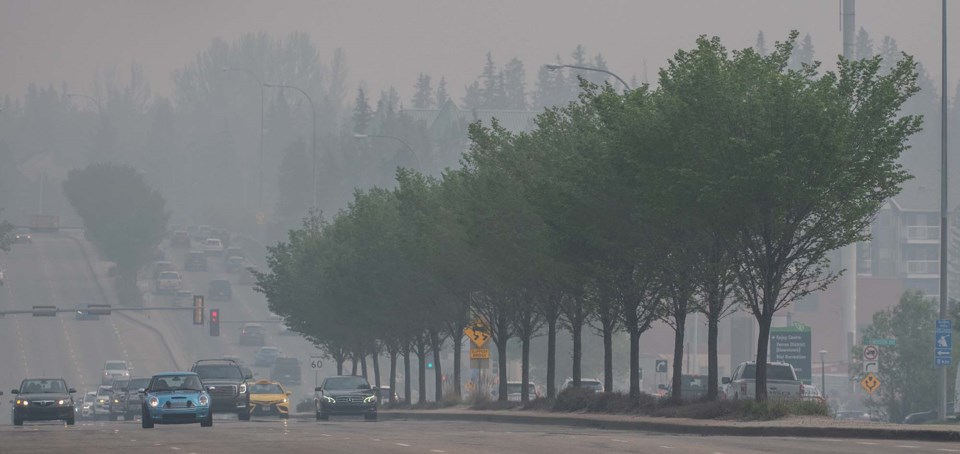St. Albert residents can learn how to breathe easy through this year’s wildfire smoke at a free talk this month run by the city’s air quality monitoring group.
The Alberta Capital Airshed (ACA) is hosting a free online talk May 13 on air quality and wildfire smoke. The talk is part of the group’s ongoing webinar series on air pollution issues.
Established in 2006, the ACA is a non-profit that runs air quality monitoring stations in the greater Edmonton region, including the one in St. Albert by Holy Family Catholic School.
Canada had its worst wildfire season on record in 2023, with some 2.21 million hectares (an area roughly 29 times the size of Edmonton) of land burned in Alberta alone. The result was days and weeks of choking smoke, with the Edmonton region setting a new record for smoke hours.
St. Albert is poised to see much more fire and smoke this summer given drought-like conditions, said Jamie Happy of the Alberta Lung Association, a speaker at the ACA’s upcoming talk. This talk aimed to show people how to prepare for this smoke.
Smoking hazard
Wildfire smoke is a major contributor to poor air quality, noted ACA engagement co-ordinator Salina Fairbank.
Happy said one of the main pollutants of concern in wildfire smoke is fine particulate matter (PM2.5). These particles are less than 2.5 micrometres wide (30 times smaller than the width of a human hair) and nearly invisible — outdoor air can be thick with PM2.5 yet still look clear. The small size of these particles lets them penetrate deep into the lungs, causing coughing, lung disease, and reduced immunity.
“It’s also a really strong risk to pregnant women,” Happy continued, as it can lead to low birth weights.
Wildfire smoke contains a long list of hazardous substances, including carbon monoxide (poisonous), nitrogen oxides (linked to acid rain) and volatile organic compounds (which form smog), Fairbank and Happy said. These and other pollutants can worsen heart disease and aggravate asthma. At least one child in B.C. died last year due to an asthma attack caused by wildfire smoke.
Being prepared
Fairbank said the May 13 talk will cover ways people can guard against wildfire smoke.
“Alberta is a very windy province,” Happy said, which makes it tough to predict where smoke will go next.
Fairbank said the ACA and Environment Canada forecast air quality several days in advance using the Air Quality Health Index, which runs from 1 (low risk) to 10+ (very high risk). Residents can use the index to plan their outdoor activities.
Heading indoors and wearing an N95 or well-sealed mask can protect you against wildfire smoke, Happy said. If it’s also smoky indoors, use a commercial air purifier, or build a cheap Corsi-Rosenthal box by duct-taping a furnace filter to a box fan.
Cities such as Edmonton are upgrading ventilation systems on public buildings so they can serve as clean air shelters, Happy noted. (St. Albert’s two official clean air shelters are St. Albert Place and Servus Place.)
Also set to speak at the upcoming talk are Health Canada air quality scientist Patrick Goegan and Roberta MacGillivray, co-owner of BGE Indoor Air Quality Solutions.
The talk runs from 10 to 11 a.m. MDT May 13, and will be archived on the ACA website. Anyone who wants to view it live should visit capitalairshed.ca to register, Fairbank said.




